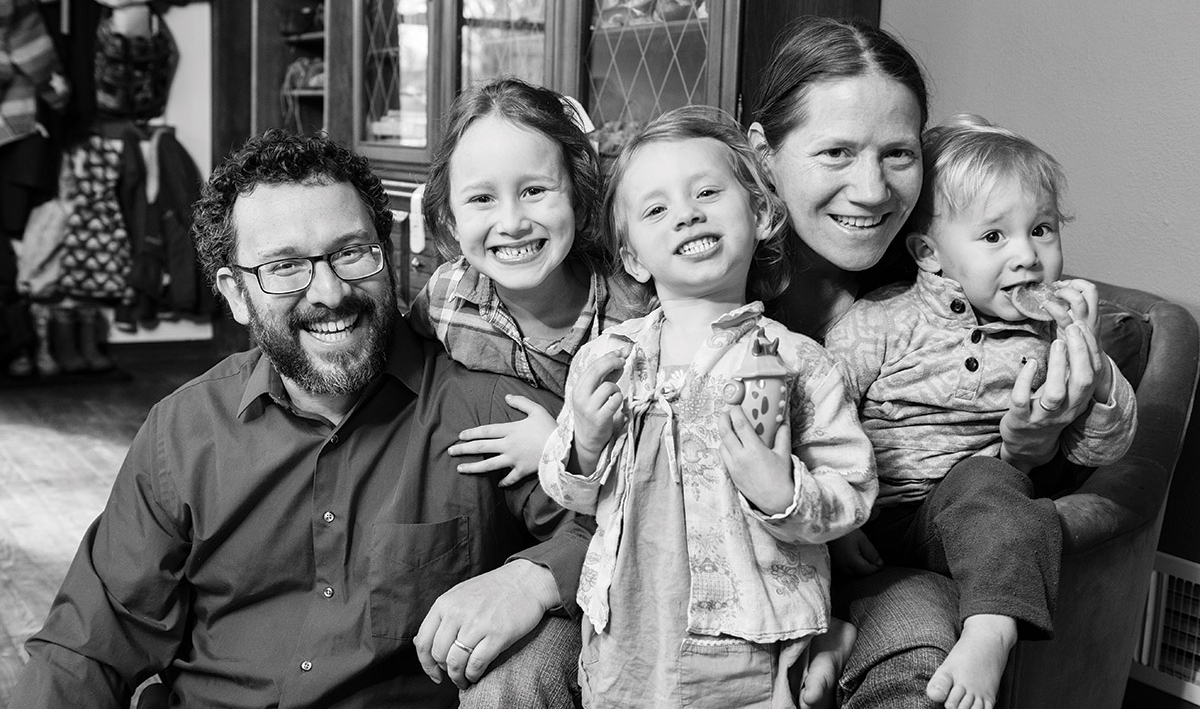
The Pregnancy Puzzle
A UW scientist discovers humans aren’t alone in facing obstacles to bringing new life into the world.
In the maritime city of Rostock, Germany — thousands of miles from their families — Dan and Iris Levitis processed their loss in isolation. Though her ultrasound had been normal just a few weeks earlier, a doctor shared the heartbreaking news: a miscarriage, 12 weeks into Iris’s first pregnancy. The fetus had stopped developing.
Frustrated, Dan wanted answers. As a demographer, he researched the patterns of all manner of populations: their births, survival, and deaths. His dissertation had focused on why people tend to live so long past their childbearing years. But the crushing loss prompted him to turn his attention to the beginning of life. Why was miscarriage so common, he wondered, and were humans uniquely burdened by pregnancy loss, as he’d always been taught?
In the eight years since launching his research, Dan, now a scientist in UW–Madison’s botany department, has discovered that he and Iris were far from alone in their struggle to bring life into the world. Humans have plenty of company: living things from geckos to garlic and cactuses to cockroaches routinely lose their offspring when they reproduce sexually.
Dan’s discovery didn’t provide a fix — if anything, he found that losses like his family experienced are an unavoidable part of reproducing. But this kinship with the natural world gave the couple some comfort.
• • •
Dan has spent a lifetime puzzling over the structure of the natural world, and he has a knack for questioning the obvious.
“When I was six and people asked me what I was going to do when I grew up, I would say, ‘I’m going to be a zoologist,’ ” says Dan, whose earliest romps through nature centered on the wild animals that popped up in his suburban Maryland backyard. He spent summers exploring his grandparents’ 46-acre property in Mahopac, New York.
An influential ecology class at Bennington College in Vermont showed him that science was more than a collection of facts in a textbook — it was a way of thinking.
“Science as a list of facts can be exciting for a little while. But science as a way of asking better questions, and getting better answers to them, is much more useful and much more interesting,” he says.
After graduation, Dan joined short-term research projects studying birds in Florida, New York, Ontario, and then California before accepting a graduate position to study ornithology at the University of California–Berkeley.
While there, Dan applied his analytical approach to finding a partner. Inspired by a headhunter he heard interviewed on NPR, he realized the ideal ad gets one response from the most qualified applicant.
“I said, ‘Okay, I’m going to write a dating ad, and I’m going to try and write in a way that I get only one response,’ ” says Dan, who posted his deliberately polarizing ad on Craigslist. “And Iris responded to it. And she was the only one.”
Back from the Peace Corps in Niger, Iris was studying for her master’s in applied linguistics at Berkeley. The two connected over their bewilderment with much of modern American culture, with both generally eschewing drinking, television, and movies. Iris transferred to the University of California–Davis as the two continued dating.
For his graduate work, Dan partnered with a professor of human demographics, Ron Lee, to develop new methods of comparing humans with other primates on their ability to live past their reproductive years. He found evidence that humans are unique in living so long after we stop having children. But in many ways, Dan’s time researching what makes humans special only reinforced his belief that we’re better off remembering that we’re not so separate from the rest of the natural world.
As they both completed their degrees, Dan and Iris married. Dan landed a position at the Max Planck Institute for Demographic Research, and the newlyweds packed their bags for Germany.
• • •
After Iris’s first miscarriage, Dan buried himself in scientific literature about infant and prebirth mortality for humans and every other species he could get good numbers on.
The crux of his research came down to a U-shaped curve well known to him and other demographers. It charts the risk of death for any given organism, starting high for the young, dipping down low at maturity, and rising again as age sets in. The pattern is ubiquitous across nature.
A half-century of research has focused on the second half of the curve: aging. While scientists had chipped away at explaining the evolution of age- related deaths, they had largely disregarded the half of the curve that shows high rates of mortality for the very young. Young organisms are weak and vulnerable, researchers figured, nothing more. Unsatisfied, Dan sought reasons for why seemingly every species faced the same precariousness with its young, both before and after birth, and why natural selection hadn’t fixed this problem.
While Dan trawled through hundreds of scientific papers on lost offspring, he and Iris got pregnant again. As they neared and then passed the 12th week, the couple felt relief. They told their friends and family the happy news.
But then Iris developed a leaking amniotic sac, threatening her fetus. Bedrest didn’t resolve the complication, and the chances of carrying the pregnancy safely to term dropped steeply.
At her doctor’s recommendation, she aborted the pregnancy at 16 weeks.
Navigating the German medical system twice in one year while grieving their losses was bewildering and isolating.
“I think most of the girls and women that I knew, we spent a lot of time thinking about how not to get pregnant. And then finding out that actually it’s hard to become pregnant, or to have a successful pregnancy, was really a shock,” Iris says. “You’re supposed to worry about unwanted pregnancies, not whether you can [get pregnant].”
At the end of 2010, Iris got pregnant again, and Dan published his research on early mortality. In his paper, he argued for a new field focused on the inherent difficulty of developing a healthy, complex organism, where any one of a million steps can go wrong. His next step was to test his theories by comparing the success of different types of reproduction across nature.
The next summer Iris gave birth to their first child, a girl.
• • •
Researchers know that miscarriages are extremely common but can’t pinpoint just how frequently they occur.
Kristen Sharp, a clinical professor of obstetrics and gynecology at the UW School of Medicine and Public Health, researches pregnancy loss and its consequences. She says that up to 20 percent of pregnancies that are confirmed by a physician end in miscarriage. But the true rate is likely quite a bit higher because many women don’t realize they are pregnant before an early loss occurs.
Tracking rates of pregnancy loss is extremely difficult. Differences in record keeping and follow-up procedures at emergency rooms and hospitals make a reliable search of records nearly impossible. And any woman who is not receiving medical care will be invisible to researchers studying miscarriage.
Cultural norms — such as concealing a pregnancy until after the first trimester — keep people from having open conversations about their experiences, says Sharp, who also counsels patients who have lost pregnancies. And feelings of guilt stop some women from discussing it, even though most miscarriages are the result of “genetic accidents.”
“It’s amazing, really, that any of us are alive and breathing, because there’s about a million pieces of this intricate problem that need to go right to lead to a pregnancy,” she says.
• • •
Among those million pieces that must fall perfectly into place is meiosis — perhaps the most complicated thing that cells do.
Organisms use meiosis (pronounced my-OH-sis) to produce sperm and eggs for sexual reproduction. Dan describes it as a kind of cellular line dance, one that mixes up chromosomes to reshuffle genes. This rearrangement helps produce offspring that are different from their parents, offspring that might be better equipped to survive in a changing world.
Meiosis takes place in the cells that give rise to sperm or eggs. To reshuffle genes, the chromosomes you inherited from your mother pair up with the chromosomes you inherited from your father. They sidle up to one another, attach, and then trade pieces of genetic information, sometimes physically swapping chunks of DNA. Then the chromosomes separate to be dealt into individual sex cells.
The upshot is that each sperm or egg a person produces inherits a set of mixed-up chromosomes with new variations. Because the swapping occurs essentially randomly during each round of meiosis, every sperm or egg created in your lifetime is bound to be as unique as the offspring created when sperm and egg ultimately meet.
This sidling, attaching, swapping, separating, and dealing is a mind-numbingly complex process. A lot of things can go wrong along the way — and they often do. The sex cells can end up with missing or extra chromosomes, almost always a fatal error leading to miscarriage if they create an embryo. Other, less obvious genetic mishaps can also occur, and often prove lethal.
The common wisdom for explaining high rates of miscarriage and fertility problems in humans has been that we have a rougher go with meiosis than other organisms. A woman’s eggs start meiosis while she is still in her mother’s womb, go on hiatus for years, and then finish the process to form a mature egg prior to ovulation. Perhaps this long pause leads to more errors, the thinking went.
Some people commented that the research made them feel better about their own miscarriages by making it clear it wasn’t their fault.
• • •
Dan isn’t one to accept common wisdom. After all, he reasoned, all female mammals pause meiosis, and many wait just as long to reproduce as people do. Plus sperm inherit more genetic problems than eggs, and they don’t wait decades to finish the process. What if humans aren’t unique — what if meiosis is just so complicated that it is bound to go awry?
Sexual reproduction always uses meiosis. But many plants and animals — palm trees and brambles, fruit flies and grasshoppers — also reproduce asexually, meaning they produce clones of themselves. Asexual reproduction typically uses the simpler process of mitosis, which doesn’t reshuffle genes. But certain species still use meiosis to reproduce asexually, a vestige of sexual reproduction. Because meiosis didn’t evolve to work for asexual reproduction, asexual meiosis is even more complicated and error prone than sexual meiosis.
Dan figured that the more complicated the cellular process underlying reproduction, the more likely it was to go wrong and lead to lost offspring. If he was right, then organisms using the most complicated process — asexual meiosis — should lose the most offspring, followed by species using sexual meiosis, and then asexual mitosis.
He wanted to compare as many animals as possible that use these three different reproductive strategies. And he believed his assumption should be just as true for plants, which reproduce using the same cellular machinery as animals.
Unable to do experiments on dozens of plants and animals himself, Dan worked with UW botany professor Anne Pringle and Harvard graduate student Kolea Zimmerman to comb through thousands of scientific articles in search of data collected by experts in each organism.
The study tracked how each species reproduced and its rates of loss during reproduction, ordering them by the complexity of their reproduction. Dan was initially skeptical when he first saw the result: 42 of the 44 plants and animals they studied supported his original idea linking complexity to reproductive loss. A menagerie of creatures and plants fit the pattern: lizards and magnolias; meadow grass and shrimp; stick insects, and dandelions. Each paid a price for reproducing sexually.
“That was the biggest surprise — how strong the pattern was,” he says.
His findings are evidence of an inherent tradeoff: there is no sexual reproduction without meiosis. And there is no meiosis without mistakes, and loss.
• • •
Dan wanted to share his results as widely as possible so that more people could understand how fundamentally difficult it was to bring offspring into the world. He and Iris found some solace knowing that their struggles were universal, and they figured other people would, too.
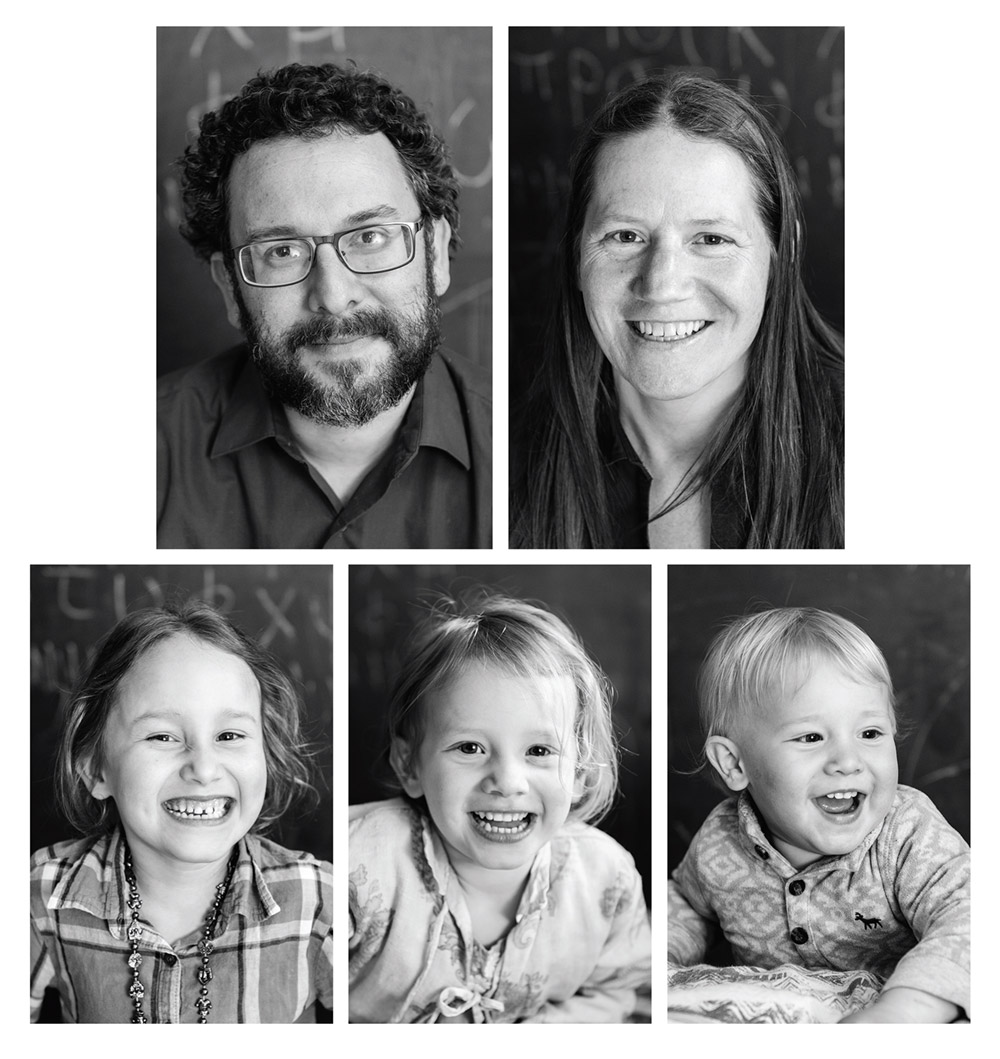
After the heartbreak of two lost pregnancies, Dan and Iris Levitis welcomed three children (left to right): Tigerlily, 6; Kestrel, 3; and Peregrine, 18 months.
With botany department illustrator Sarah Friedrich ’98, Dan created a short video explaining his family’s story of loss, his search for answers, and the barrier that meiosis poses to healthy reproduction. He shared the video widely, including on a Facebook page for the March for Science.
Some people commented that the research made them feel better about their own miscarriages by making it clear it wasn’t their fault. Another coined the phrase “meiosis mishaps” to describe her own pregnancy losses.
“Every time I’ve talked about this in any sort of public setting, whether it’s online or in person, somebody ends up sharing their story of pregnancy loss and saying that they’re so glad that people are talking about it,” Dan says.
The Levitises now live on a quiet street on the east side of Madison with their three children, each born in a different country: Tigerlily in Germany; Kestrel in Denmark; and Peregrine in the United States, after they moved to Madison. (Each was also given a conventional middle name to turn to should their parents’ natural-world choices ever fail to suit them.)
And years after losing their first two pregnancies in Germany, Dan’s findings have given the couple a springboard to talk about their losses and work through them together.
“I thought it was kind of cathartic research,” Iris says. “It makes you feel less alone. More than just having somebody say, ‘Oh, I lost a pregnancy, too.’ More than just anecdotal evidence from other humans. It’s more widespread than that.”
Eric Hamilton is a science writer for University Communications at UW–Madison.
Published in the Summer 2018 issue
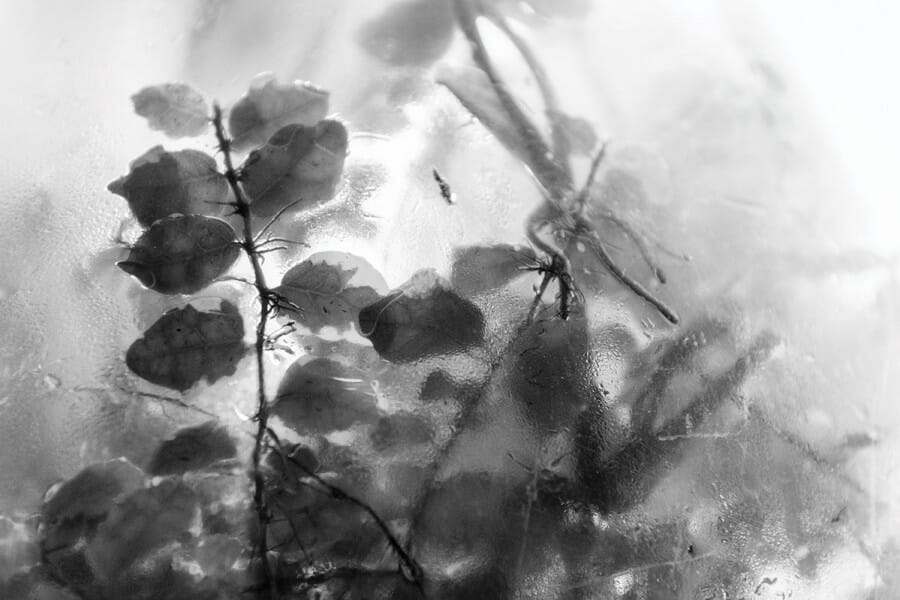
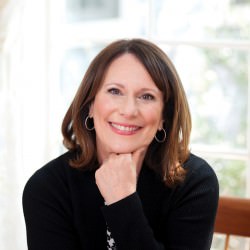

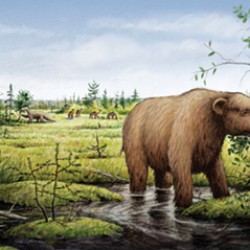
Comments
No comments posted yet.